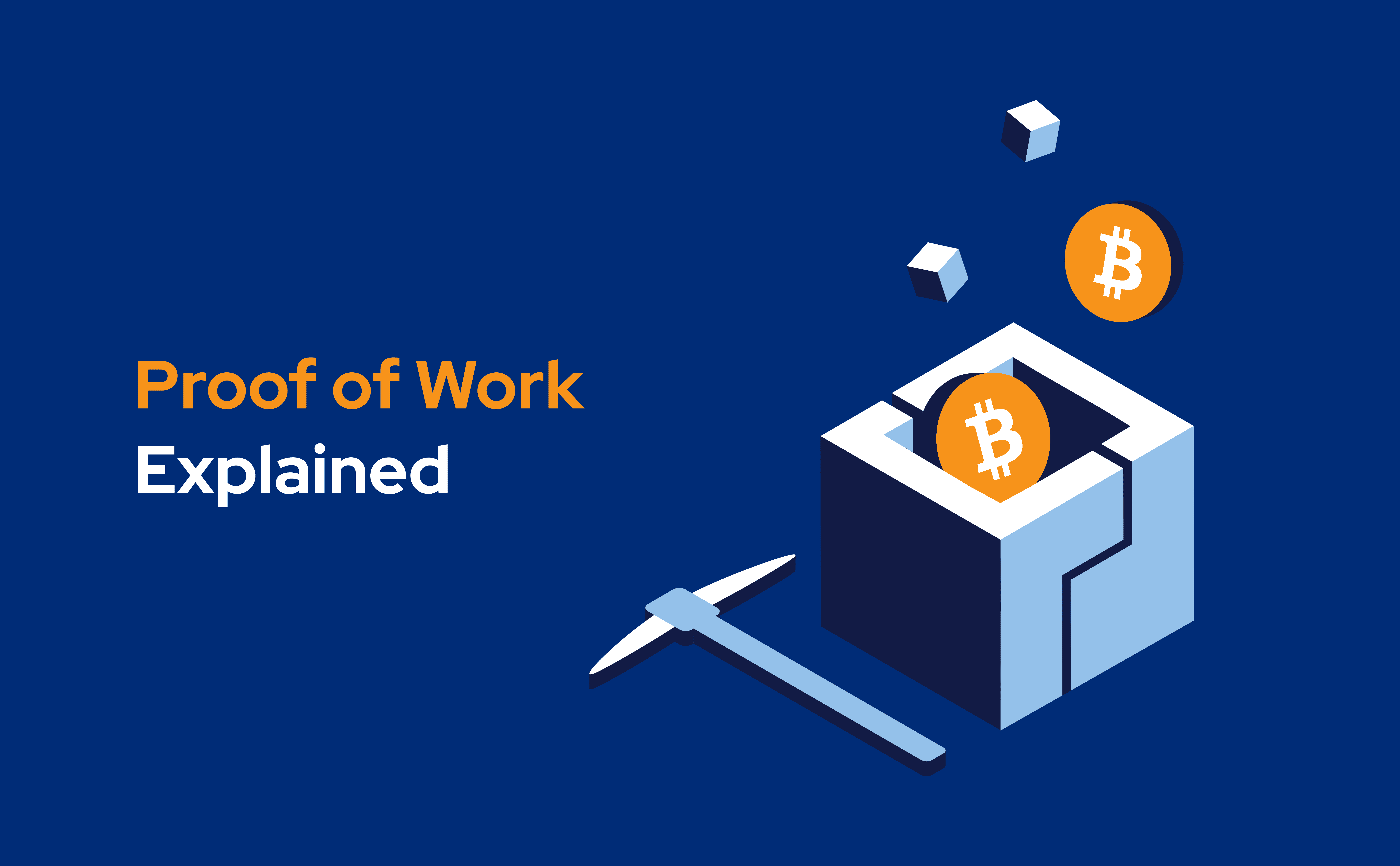Proof of Work Explained
You will inevitably have to face quite a few terms and phrases when dealing with crypto. The words "Proof of Work" or acronym PoW will most likely be one of them. It is a form of cryptographic proof that is essential to the existence of the well known digital gold - Bitcoin.

What is PoW?
If you imagine transactions between users you most likely imagine Person A sending money to Person B through a bank. The sender types in an amount, and the bank then deducts that amount from their account and adds it to the receiver's account. What you are imagining is called a centralized system, where one core entity is in charge of keeping track of and validating transactions.
Decentralization is the opposite of centralization and is the key to cryptocurrencies. In this type of system, all users can see and track all transactions and not one but a whole network of users is responsible for validating and executing transactions. This idea of having no intermediary or third party between the sender and receiver is the charm of cryptocurrencies, but how is it possible to ensure that network users remain honest and don't manipulate data to their advantage?
That is where proof of work comes in. This protocol is used by cryptocurrencies, most notably Bitcoin, to validate the transactions that occur on the network. Perhaps a better way to look at such proof is by viewing it not as a way of processing transactions but rather as a way of making sure that the data on the network is not manipulated or fraudulent. And the way in which this validation mechanism works is key to ensuring the safety and security of cryptocurrencies that use it.
How does it work?
Proof of Work was created and to this day strives for the same goal of making sure that all data is validated. At the root of PoW, there are the miners who do the "work" itself. The job of the miners, called mining, is essential to the existence of some of the most popular cryptocurrencies out there. This so-called work is to generate strings of characters (hash) and match them with the current block's hash.
In basic terms, when users make transactions these transactions are all collected and stored in a block, which is where blockchain data is stored. Then miners go through the transactions in said block and verify their validity. This verification is done through solving computational or mathematical puzzles that are hard to solve but easy to verify the validity of. If a miner finds the solution to the puzzle, they can update the blockchain.
The whole Proof of Work system relies on competition between the miners as they compete against each other to solve the puzzles and broadcast new blocks to the network as this is how valid blocks are added to the chain. This process requires not only speed but a lot of effort and funds from the individual miners as the tech for mining Bitcoin is not only expensive but uses a lot of energy.
Now you may be thinking, what's in it for them? Well, if a miner is the first to find the correct solution to the puzzle they are rewarded with a predetermined amount of Bitcoin in return for their work. Although, this reward keeps on getting smaller each year, with it being about 50 BTC back in the early days of Bitcoin and being as low as 6.25 BTC in 2020. Also important to note is that even now the reward of 6.25 BTC is not an easy task to come by as the odds of finding the correct hash (puzzle solution) is about 1 in over 20 trillion.
Challenges and Advantages
You may have heard that Proof of Work requires a lot of energy, time and computation to be effective. This, in turn, affects the scalability of this consensus protocol. For example, it is estimated that the yearly use of power to mine Bitcoin is roughly equivalent to the amount of energy consumed by countries like Thailand, Finland or Switzerland. While on the flip side, the security aspect of the protocol is undeniable and has proven to be able to withstand the test of time.
This, however, is where proof of stake should be mentioned. Perhaps the second-best know cryptocurrency - Ethereum plans to shift all of its transaction validations to the proof of stake consensus mechanism. This is due to the fact that like PoW, PoS also has a high level of safety and security but it delivers where PoW lacks - energy consumption. Proof of stake is a greener and cheaper form of consensus and thus is one that most Ethereum users would like to see used in the future.
In conclusion…
Proof of work is a consensus mechanism ensuring that miners add new blocks to the blockchain only after producing computational work to prove that it's valid. This way of validating transactions allows cryptocurrencies to be decentralized. This consensus, first used by Bitcoin, has a spotless track record of being secure and reliable. However, proof of work does require a large amount of energy. This high use of energy is why some cryptocurrencies, most notably Ethereum, are moving in the direction of proof of stake as their consensus mechanism.